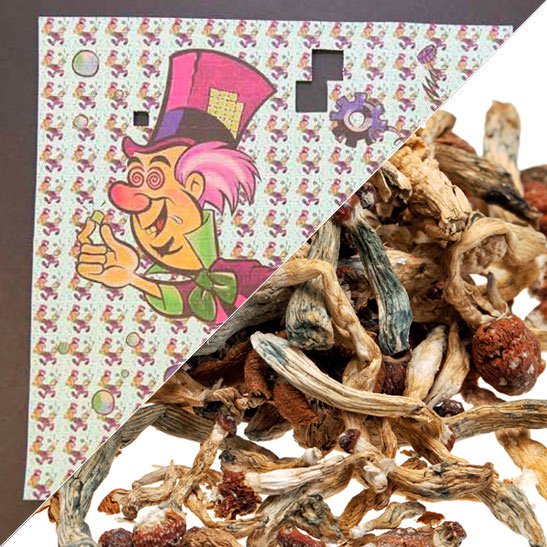Everything About Psychotomimetic Substances: Their Role in Psychological Study
Psychotomimetic substances, such as LSD and psilocybin, have actually gathered increasing interest in psychological research study for their capability to duplicate psychotic signs and supply insight right into different psychological health and wellness conditions. Their communications within the brain, particularly with serotonin and dopamine pathways, recommend a facility partnership between consciousness and neurobiology that may unlock unique healing opportunities. As scientists remain to examine their possible applications, moral considerations surrounding their usage in clinical setups become paramount, increasing crucial concerns regarding safety and security and educated consent that warrant further exploration.
Definition of Psychotomimetic Compounds
In the realm of psychological research, psychotomimetic compounds are substances that can induce impacts resembling those of psychosis, such as hallucinations, delusions, and altered perceptions of truth - About Golden Psycho. These substances can be categorized into various categories, consisting of hallucinogens, dissociatives, and specific stimulants, each producing unique emotional impacts
The pharmacological action of psychotomimetic compounds frequently includes inflection of natural chemical systems, especially those pertaining to serotonin, dopamine, and glutamate. As an example, compounds like lysergic acid diethylamide (LSD) largely act upon serotonin receptors, causing profound changes in sensory assumption and cognition.
The energy of psychotomimetics in study hinges on their capacity to mimic psychotic symptoms, supplying a version for understanding the hidden systems of psychotic conditions such as schizophrenia. By examining the impacts of these compounds, scientists can get understandings into the neurobiological and mental procedures that add to psychosis.
Moreover, psychotomimetic substances have been explored for their healing capacity in treating various mental health conditions, consisting of clinical depression and stress and anxiety, highlighting their double role in both study and prospective scientific applications.
Historical Growth and Context
The expedition of psychotomimetic compounds has an abundant historic context that goes back to old worlds, where compounds such as psilocybin mushrooms and peyote were made use of in spiritual and recovery methods. These early uses often intertwined with spiritual rituals, suggesting an extensive respect for the transformed states of awareness caused by these compounds.
The mid-20th century marked a significant pivotal moment in the research of psychotomimetic substances, especially with the synthesis of LSD by Albert Hofmann in 1938. The succeeding popularization of LSD in the 1960s catalyzed a wave of rate of interest in both its psychological results and potential restorative applications. Scientists began to explore how these substances might mimic psychotic states, providing insights right into mental ailment.
However, the increasing association of psychotomimetics with counterculture movements led to regulative backlash, culminating in the criminalization of a number of these compounds. Regardless of these obstacles, the renewal of passion in the therapeutic capacity of psychedelics in the 21st century has actually prompted renewed study. This historic trajectory emphasizes the advancing assumption of psychotomimetic substances, changing from spiritual compounds to topics of scientific query and, possibly, restorative promise.
Devices of Action
Comprehending the systems of action of psychotomimetic compounds reveals the intricate means these substances connect with the mind's neurochemistry. These compounds mainly apply their effects through inflection of natural chemical systems, especially serotonin, dopamine, and glutamate. Numerous classic psychedelics, such as psilocybin and LSD, primarily act as agonists at serotonin 5-HT2A receptors, leading to modified assumption and cognition. This communication not just affects sensory processing but also enhances emotional and introspective experiences.
In addition to serotonin, dopaminergic pathways are dramatically influenced by substances like mescaline and specific cannabinoids, which can bring about modified states of awareness and modifications in mood and inspiration. In addition, the NMDA receptor incongruity observed with substances like ketamine highlights one more pathway whereby psychotomimetics might generate dissociative states and extensive alterations in believed procedures.
The neurochemical waterfalls initiated by these communications result in facility and complex click for source psychological results. Recognizing these devices is critical for both the advancement of emotional research and the therapeutic potential of psychotomimetic substances, as they give understandings into the underlying neural correlates of transformed states of consciousness.
Current Study and Applications
Current examinations right into psychotomimetic substances have actually revealed a renewal of passion in their healing applications, particularly in the fields of psychiatry and psychology. Scientists have actually started checking out materials such as psilocybin, LSD, and ayahuasca for their potential to reduce signs connected with different psychological wellness problems, including anxiety, anxiousness, and PTSD.
Clinical trials have actually demonstrated that, when carried out in controlled settings, these substances can facilitate extensive mental experiences, promoting psychological innovations and boosted restorative results. For circumstances, research studies have actually revealed that psilocybin-assisted therapy can cause considerable decreases in treatment-resistant anxiety, with effects lasting for a number of months post-treatment.
Moreover, psychotomimetic compounds are being reviewed for their capability to cultivate neuroplasticity, potentially permitting for even more effective rewiring of maladaptive idea patterns. These findings suggest that such compounds may act as accessories to traditional psychotherapeutic techniques, enhancing the efficacy of healing interventions.
As research study advances, the emphasis is changing in the direction of understanding the optimal dosages, restorative setups, and individual features that can make best use of the benefits of these compounds. This burgeoning area holds assurance for reinventing mental health and wellness treatment standards and dealing with the constraints of standard psychiatric medicines.
Honest Considerations in Study

Browsing the moral landscape of research study entailing psychotomimetic substances is vital to making certain participant safety and security and the integrity of study outcomes. Researchers must focus on educated authorization, ensuring that individuals completely recognize the possible risks and advantages connected with the materials being studied. This consists of supplying thorough information about feasible mental effects, including intense and long-term impacts, and permitting participants the chance to withdraw from the research at any type of time scot-free.
IRBs assess research protocols to guard individual well-being and promote ethical standards. In addition, the capacity for coercion must be carefully examined, especially when at risk populaces are included.
Discretion is an additional critical consideration. Scientists must apply robust steps to safeguard individuals' identifications and information, especially offered the sensitive nature of experiences related to psychotomimetic substances (About Golden Psycho). Eventually, a commitment to moral practices not only cultivates trust fund between researchers and individuals but likewise boosts the reputation and credibility of the study outcomes, contributing to the improvement of psychological knowledge

Conclusion
In final thought, psychotomimetic compounds, specifically classic psychedelics such as LSD and psilocybin, offer significant insights into useful site emotional conditions via their one-of-a-kind systems of activity. Their therapeutic possibility in dealing with conditions like anxiety and PTSD highlights the significance of continued research study in this field. Making certain honest standards in research practices is vital resource for individual safety and educated approval, enabling for a responsible expedition of these compounds' benefits and ramifications within mental science.